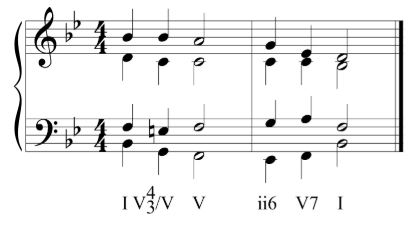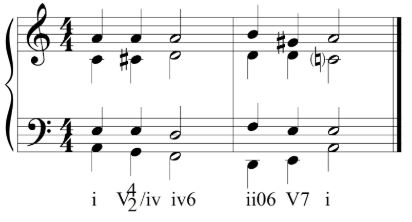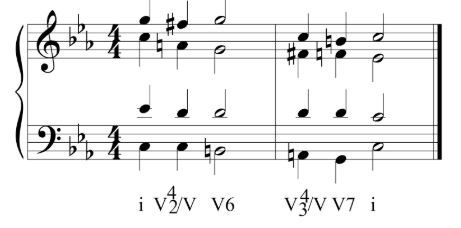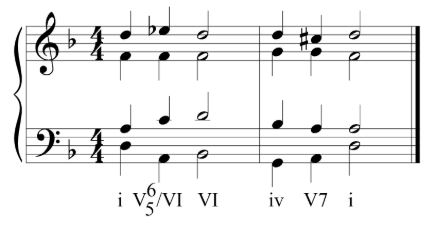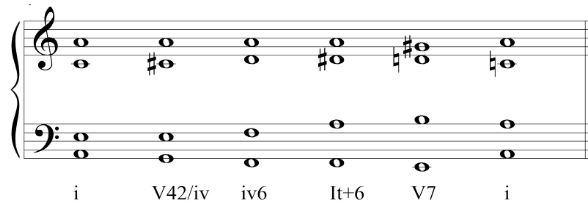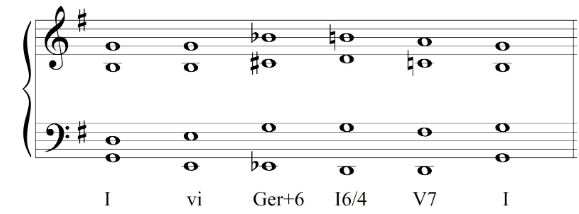Integrated Aural Skills 2019-20
Harmonic Dictation Exam Review
General guidelines
- First hearing: listen to overall color of harmony, noticing chromatic tones, cadence types, pre-cadential chords, etc. Are there secondary dominants? Augmented sixth chords? Neapolitan chords? Borrowed chords? Irregular resolutions? Make some analysis predictions.
- First and second hearings: write your bass notes in as soon as possible. This voice will determine not only the chord, but the inversion. Further refine your analysis predictions.
- First, second, and third hearings: write in the soprano notes. These are useful as a confirmation of predicted harmonies, or a clarification between two possible different outcomes.
- Final hearing: check your work according to principles of harmonic progression and voice-leading, and use the clues from the soprano and bass voice to eliminate possible wrong answers. The final hearing is also a good time to check whether dominant chords have a seventh degree, for example.
Chord progression rules
Review and memorize the rules of chord progression. This will save you a great deal of time figuring out your Roman numeral analysis.
-
Major keys
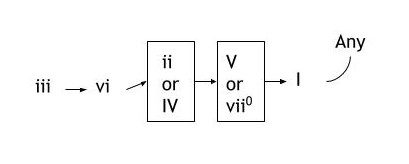
-
Minor keys
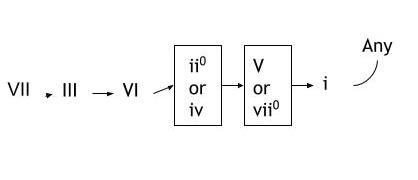
Procedures for possible harmonies
Root movement
- Review the rules of root movement in the table below:
| Bass Notes | Likely Chord Pattern |
|---|---|
| do, re, mi | I-V6/4-I6 OR I-V4/3 OR I-viio6-I6 |
| do, re, sol | I-ii-V |
| do, mi, fa | I-I6-IV |
| do, mi, sol | I-I6-V |
| do, fa, re | I-IV-ii |
| do, fa, mi | I-IV-I6 |
| do, fa, sol | I-IV-V OR I-vi-ii6 |
| do, sol, la | I-V-vi |
| do, la, fa | I-vi-IV OR I-vi-ii6 |
| do, ti, do | I-V6/5-I OR I-V6-I |
- In Units 9 and 19, we studied these rules in context in piano practice. Review the following examples at the piano, paying special attention to root movement:



Secondary Dominants
Neapolitan chord
- Commit the solfege of the Neapolitan chord to memory: fa-le-ra. Remember, the Neapolitan chord always appears in first inversion.
- Sing the Neapolitan chord procedure:
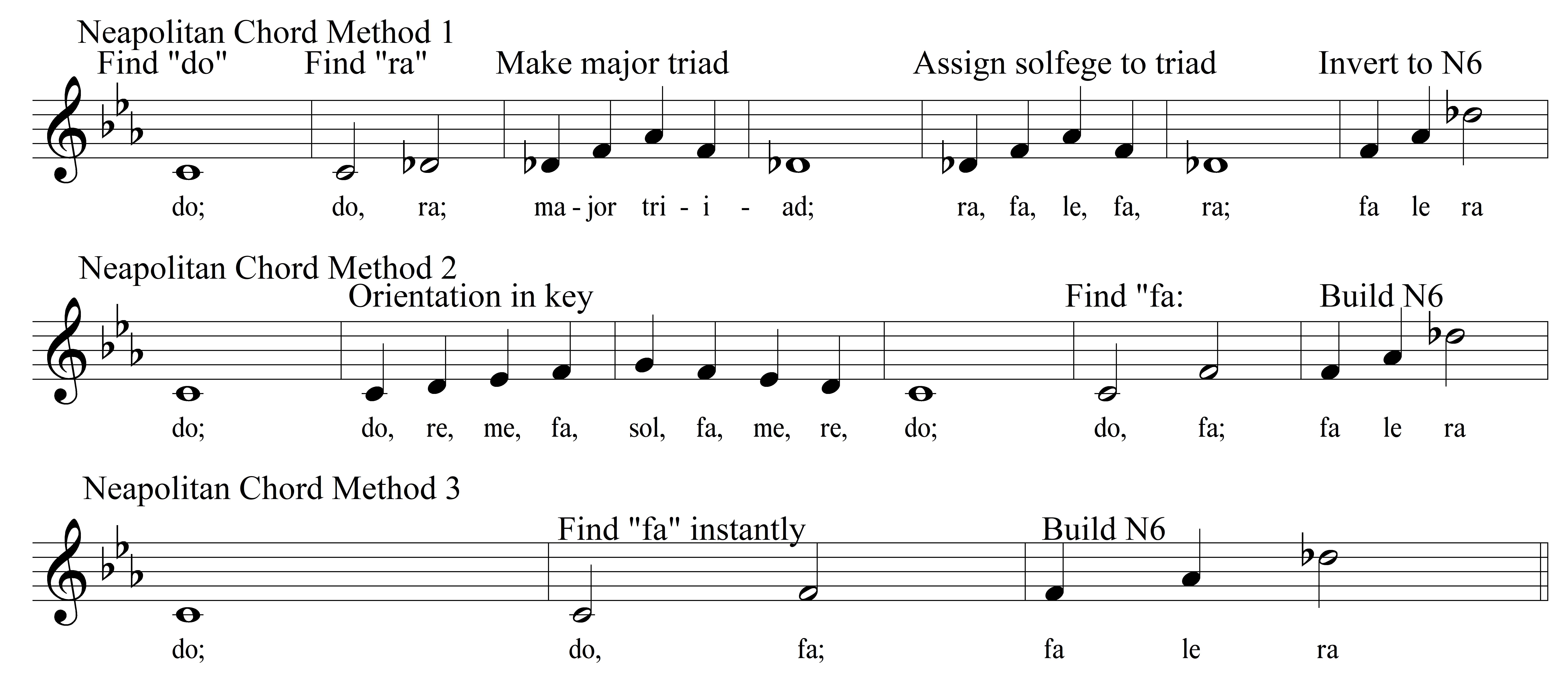
- Play the Neapolitan chord on the piano to hear how it functions in context:


Augmented sixth chords
Memorize the solfege of the three types of augmented sixth chord, and the salient features of each:
- Italian sixth = le-do-fi (only 3 tones)
- German sixth = le-do-me-fi (enharmonic equivalent of the major-minor seventh chord, though greatly different in solfege and function!)
-
French sixth = le-do-re-fi (composed of a partial whole tone collection, and therefore very dissonant)
- Sing the augmented sixth chords:

- Play augmented sixth chords on the piano to hear how they function in context:
Borrowed chords
- Memorize the possibilities for borrowed chords: therefore, in major keys, iio, ii∅7, ♭III, iv, ♭VI, viio7, etc.
- Practice the following progressions on the piano to easily recall the ways in which we can borrow chords from the parallel mode:




Irregular resolutions
- Remember, irregular resolutions are comparable to a deceptive cadence, but in the context of a secondary dominant. Practice this example of what they sound like:


